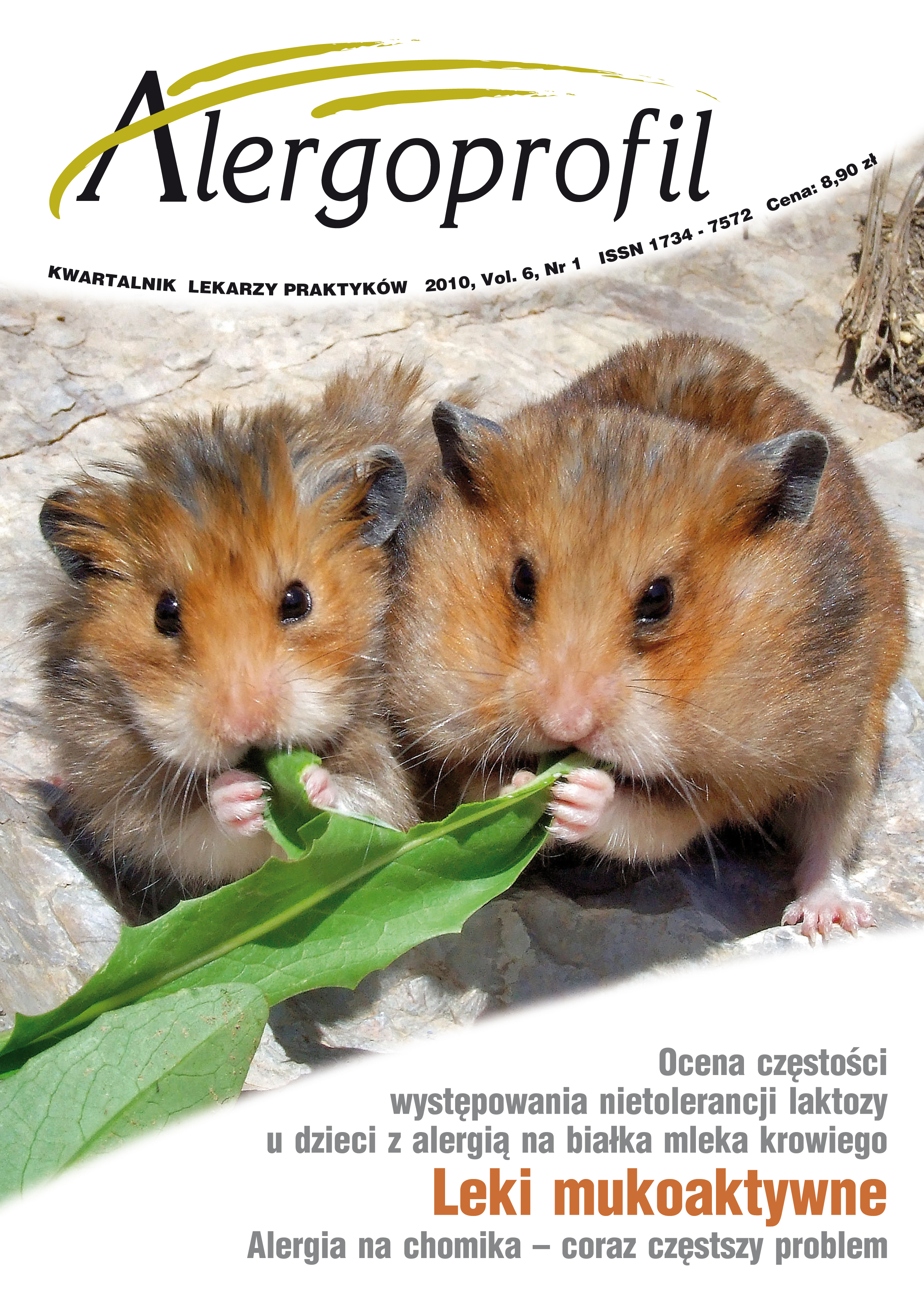Aspects of viruses transmitted through foods
Main Article Content
Abstract
The occurrence of viruses in food is connected with level of contamination of comestible industry materials and also with not observing the rules of self hygiene of the employees, with leads to diffusion of viruses diseases. In this paper discussed factors to favourable occurrence and to spreading of viruses in environment and alimentary products. Characteristic viruses by physical and chemical factors are presented.
Downloads
Article Details
Copyright: © Medical Education sp. z o.o. This is an Open Access article distributed under the terms of the Attribution-NonCommercial 4.0 International (CC BY-NC 4.0). License (https://creativecommons.org/licenses/by-nc/4.0/), allowing third parties to copy and redistribute the material in any medium or format and to remix, transform, and build upon the material, provided the original work is properly cited and states its license.
Address reprint requests to: Medical Education, Marcin Kuźma (marcin.kuzma@mededu.pl)
References
2. Berthold A., Żukowska K.: Wirusy przenoszone przez żywność. Postępy Techniki Przetwórstwa Spożywczego 2008, 2: 75-79.
3. Pina M., Fratamico A., Arun K., Smith B., Smith J.L.: Foodborne Pathogenes Microbiology and Molecular Biology. Colister Academic Press 1998: 119-143.
4. Koopmans M., Duizer E.: Foodborne viruses: an emerging problem. Inter. J. Food Microbiol. 2004, 90: 23-41.
5. Larski Z.: Rola wirusów w ewolucji życia. Med. Wet. 2007, 63(7): 755-757.
6. Kańtoch M.: Wirusologia lekarska. PZWL, Warszawa 1998.
7. Małafiej E.: Wybrane zagadnienia diagnostyki wirusów. Badanie i Diagnoza 1998, 4(8/9).
8. Rzeżutka A., Kozyra J., Chrobocińska M., Kaupke A., Mizak B.: Norowirusy w środowisku i żywności – nowe zagrożenie. Medycyna Wet. 2007, 63(4): 379-383.
9. Cowden J., Wall P., Adak G., Evans H., Le Baigue S., Ross D.: Outbreaks of foodborne infectious intestinal disease in England and Wales 1992-1993. CDC Reviews 1995, 5: 109-117.
10. Hutin Y.J., Pool V., Gramer E.H., Nainan O.V., Weth J., Williams I.T., Goldstein S.T., Gensheimer K.F.: A multistate, foodborne outbreak of hepatitis A. National Hepatitis A Investigation Team. New England Journal of Medicine 1999, 340: 595-602.
11. Cliver D.: Detection and control of foodborne viruses. Trends in Food Science and Technology 1995, 6: 353-357.
12. Halliday M.L., Kang L.Y., Zhou T.K.: An epidemic of hepatitis A attributable to the ingestion of raw clams in Shanghai, China. J. of Infect. Dis. 1991, 164: 852-859.
13. Turlejska H., Pilzner U., Konecka-Matyjek E., Wiśniewska K.: Przewodnik do wdrażania zasad GMP/GHP i systemu HACCP w zakładach żywienia zbiorowego. Fundacja Pomocy Programów dla Rolnictwa i Wsi (FAPA), Warszawa 2003.
14. Bosh A., Pinto R., Abad X.: Survival and transport of enteric viruses in the environment. W: Viruses in Food. Goyal S. (red.). Springer, New York 2006.
15. Croci L., De Mdici D., Scaslfaro C., Fiore A., Toti L.: The survival of hepatitis A virus in fresh produce. Int. J. Food Microbiol. 2002, 73: 29-34.
16. Croci L., De Mdici D., Scaslfaro C., Fiore A., Divizia M., Donia D., Cosentino A.M., Moretti P., Costantini G.: Determination of enteroviruses, hepatitis A virus, bacteriophages and Escherichia coli in Adriatic Sea mussels. J. Appl. Microbiol. 2000, 88: 293-298.
17. Sobsey M.D., Shields P.A., Hauchman F.S., Davis A.L., Rullman V.A., Bosch A.: Survival and persistence of hepatitis A virus in environmental samples. W: Viral Hepatitis and Liver Disease. Zuckerman A. (red.). Liss A.R., New York 1988.
18. Kingsley D.H., Hoover D.G., Papafragkou E., Richards G.P.: Inactivation of hepatitis A virus and a calicivirus by high hydrostatic pressure. J. Food Prot. 2002, 65: 1605-1609.
19. Greening G.E.: Human and animal viruses in food (including taxonomy and enteric viruses). W: Viruses in foods. Springer, Minesota 2006: 6-9, 11-13, 15, 30.
20. Maier K.P.: Zapalenia wątroby. Diagnostyka, terapia i zapobieganie u chorych z ostrymi i przewlekłymi chorobami wątroby w praktyce. PZWL, Warszawa 1998.
21. Magdzik W., Naruszewicz-Lesiuk D., Zieliński A.: Choroby zakaźne i pasożytnicze – epidemiologia i profilaktyka. ά-medica press, Warszawa 2004.
22. Deptuła W., Buczek J., Markiewicz D.: Czy wirusy występujące w środowisku wodnym mogą być groźne Sympozjum naukowe pt.: „Choroby odzwierzęce człowieka związane z zatruciami pokarmowymi”, Szczecin 1996.
23. Bidawid S., Farber J.M., Sattar S.A., Hayward S.: Heat inactivation of hepatitis A virus in dairy foods. J. Food Prot. 2000, 63: 522-528.
24. Doultree J.C., Druce J.D., Birch C.J., Bowden D.S., Marshall J.A.: Inactivation of feline calcivirus, a Norwalk virus surrogate. J. Hosp. Infect.1999, 41: 51-57.
25. Terio V., Martella V., Moschidou P., Di Pinto P., Tantillo G., Buonavoglia C.: Norovirus in retail shellfish. Food Microbiology 2010, 27(1): 29-32.
26. Fumian T.M., Leite J.P., Marin V.A., Miagostovich M.P.:A rapid procedure for detecting noroviruses from cheese and fresh lettuce. Journal of Virological Methods 2009, 155(1): 39-43

